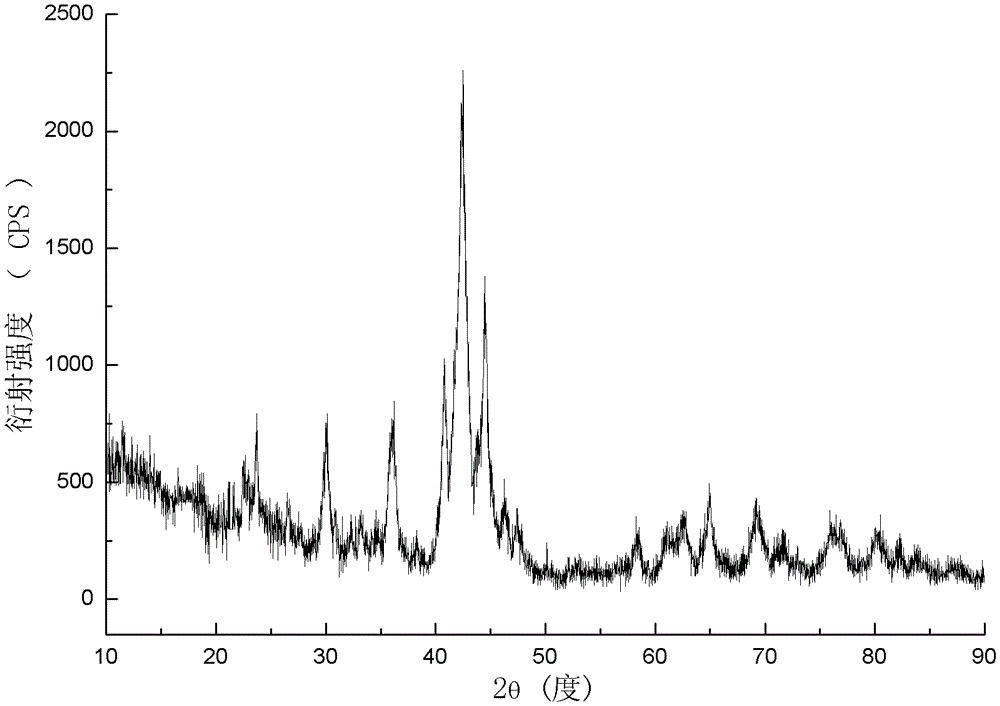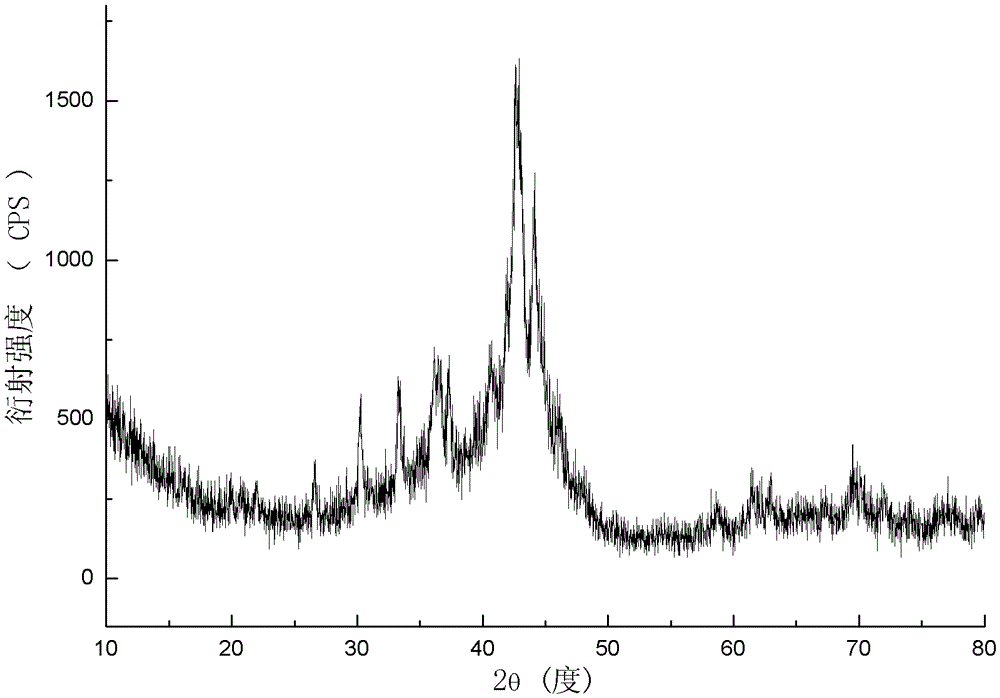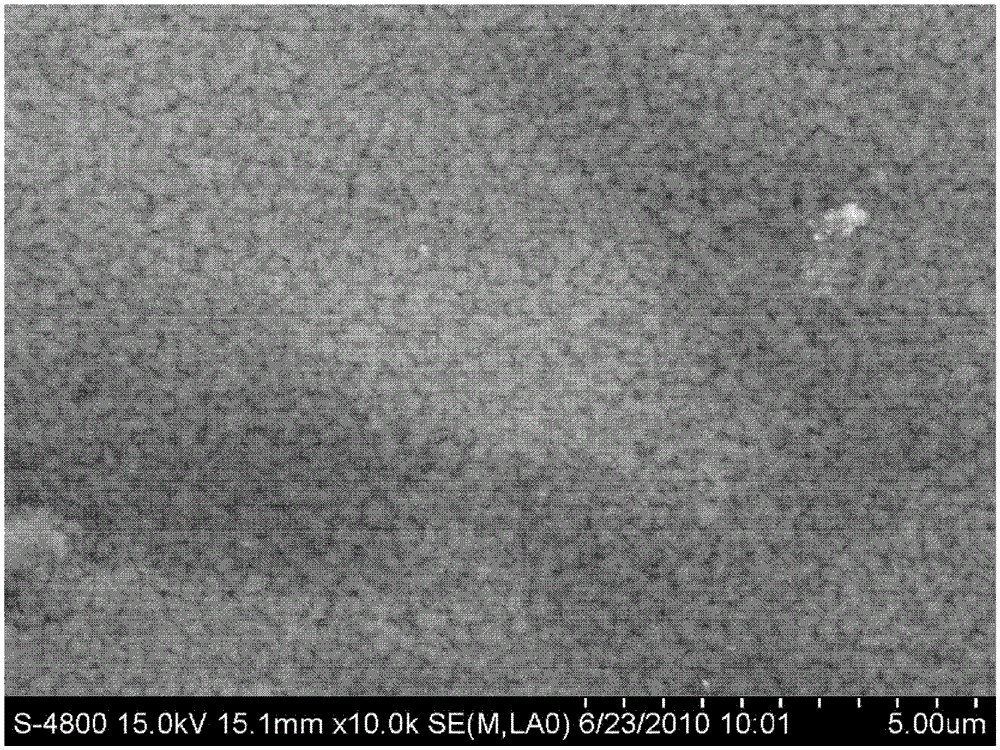Preparation method of sm-co based amorphous nanocrystalline thin strip magnet
An amorphous nanocrystal, sm-co technology, applied in the direction of magnetic objects, inductance/transformer/magnet manufacturing, magnetic materials, etc., can solve the problem of low hard magnetic properties of alloys, Sm-based amorphous alloy materials have not yet appeared, and no existing High coercive force Sm-Co based amorphous nanocrystalline alloy materials and other issues
- Summary
- Abstract
- Description
- Claims
- Application Information
AI Technical Summary
Problems solved by technology
Method used
Image
Examples
Embodiment 1
[0043] Sm of Sm-Co-based Amorphous and Nanocrystalline Thin Strip Magnets 11.3 co 56.6 Fe 7.5 Zr 4.7 B 3.8 (Nb 4.7 al 5.7 Si 4.7 C 1.0 ) A preparation method of an amorphous nanocrystalline thin strip magnet.
[0044] The first step, raw material preparation
[0045] According to the raw material ratio Sm in atomic percentage 11.3 co 56.6 Fe 7.5 Zr 4.7 B 3.8 (Nb 4.7 al 5.7 Si 4.7 C 1.0 ), take raw material pure Sm, pure Co, pure Fe, pure Zr, B-Fe alloy, pure Nb, pure Al, pure Si and pure graphite C powder, additionally add the pure The mass percentage of Sm is 3% pure Sm, thus completing the raw material preparation.
[0046] The second step is to melt the raw materials to prepare master alloy ingots
[0047] Put all the raw materials prepared in the first step into the crucible of the vacuum arc melting furnace. When melting, first vacuumize the furnace body to 10 -3 Pa, the temperature of the furnace is raised above the melting point of the raw metal Zr, ...
Embodiment 2
[0052] Except that the peripheral speed of the cooling molybdenum roller wheel rotation of the third step in embodiment 1, that is, the rapid quenching speed of the melt becomes 5m·s -1 Except, others are all the same as embodiment 1, and the prepared Sm 11.3 co 56.6 Fe 7.5 Zr 4.7 B 3.8 (Nb 4.7 al 5.7 Si 4.7 C 1.0 ) The magnetic properties, thickness and average grain size parameters of the main crystal phase of the amorphous and nanocrystalline thin strip magnets are shown in Table 1.
Embodiment 3
[0054] Except the circumferential speed that the cooling molybdenum roll wheel of the third step in the embodiment 1 rotates, the rapid quenching speed of the melt becomes 15m·s -1 Except, others are all the same as embodiment 1, and the prepared Sm 11.3 co 56.6 Fe 7.5 Zr 4.7 B 3.8 (Nb 4.7 al 5.7 Si 4.7 C 1.0 ) The magnetic properties, thickness and average grain size parameters of the main crystal phase of the amorphous and nanocrystalline thin strip magnets are shown in Table 1.
PUM
| Property | Measurement | Unit |
|---|---|---|
| thickness | aaaaa | aaaaa |
| particle size | aaaaa | aaaaa |
| particle size | aaaaa | aaaaa |
Abstract
Description
Claims
Application Information
 Login to View More
Login to View More - R&D
- Intellectual Property
- Life Sciences
- Materials
- Tech Scout
- Unparalleled Data Quality
- Higher Quality Content
- 60% Fewer Hallucinations
Browse by: Latest US Patents, China's latest patents, Technical Efficacy Thesaurus, Application Domain, Technology Topic, Popular Technical Reports.
© 2025 PatSnap. All rights reserved.Legal|Privacy policy|Modern Slavery Act Transparency Statement|Sitemap|About US| Contact US: help@patsnap.com



